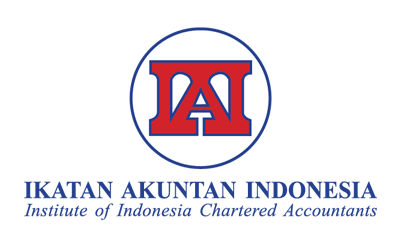IMPLEMENTASI KONSEP BALANCED SCORECARD DALAM MANAJEMEN SUMBER DAYA MANUSIA
Abstract
Full Text:
PDFReferences
Bagastawa, Saptadi (2006).Meraih Keunggulan Kompetitif Melalui Praktik Manajemen SDM, Amara Book: Yogyakarta Becker, Huselid & Ulrich (2001), The HR Scorecard: Linking People, Strategy and Performance, Harvard Business Scholl Press: Boston Dharma, Surya & Sunatrio,Yuanita (2001), Human Resource Scorecard: Suatu Model Pengukuran Kinerja SDM, Usahawan, No.11 Th.XXX Eckerson,W.W.(2009),Performance Management Strategies, Business Intelligent Journal, 14(1) Emmy, Sovia (2011), Makna Kecerdasan Emosional dan Spiritual dalam Pemberdayaan SDM Organisasi,
Huselid,M.A.,Becker,B.E. & Beatty,R.(2005). The Workforse Scorecard, Harvard Business Scholl Press: Boston
pusdiklat.depnakertrans.go.id/index.php?h al=makna.php
Insiatiningsih(2002).Gagasan tentang SDM yang Fleksibel dan Efisien Strategi untuk Mencapai Daya Saing Bisnis, Ventura, Vol.5.No.1
Kaplan,SR,& Norton,DP (1996). The Balanced Scorecard, Harvard Business School Press: Boston Kaplan & Norton (2001), The Strategy Focused Organization, Harvard Business School Press: Boston Masruroh (2013). Pengukuran Kinerja Menggunakan Human Resources Scorecard dalam Rangka Meningkatkan Kinerja di PT. Rajawali Tanjungsari, prints.upnjatim.ac.id/3118/ Naves, Patience Metje (2002). Benchmarking Eskom’s Human Resources Practies Empacting on Organizational Performance, http://www.rau.ac/. Tootell,B.,Blackler,M.,Toulson,P. & Dewe,P.(2009). Metrics:HRMs Holy Grail? A New Zealand case study, Human Resources Management Journal,19(4),375-392 Iveta, Gabcanova(2012). Human Resources Key Performance Indicators, Journal of Competitiveness, Vo.4,Issue 1 . http//www. Cjournal.cz/files/89.pdf1 Yeung,AK. & Berman,B.(1997).Adding Value Through Human Resources: Reorienting Human Resources Measurement to Drive Business Performance, Human Resource Management, 36(3) http:/dx.doi.org/10.1002/(SICI)1099050x
DOI: https://doi.org/10.35591/wahana.v16i2.85
Wahana: Jurnal Ekonomi, Manajemen dan Akuntansi
ISSN : 2685-1415 (Online) | 1410-8224 (Print)
Published by Pusat Penelitian dan Pengabdian Masyarakat Politeknik YKPN Yogyakarta.
Jl. Gagak Rimang No. 2-4 Balapan, Yogyakarta 55222
Phone (0274) 560159, 562317, 513413, 563516 Fax. (0274) 561591
 This work is licensed under a Creative Commons Attribution-ShareAlike 4.0 International License.
This work is licensed under a Creative Commons Attribution-ShareAlike 4.0 International License.













